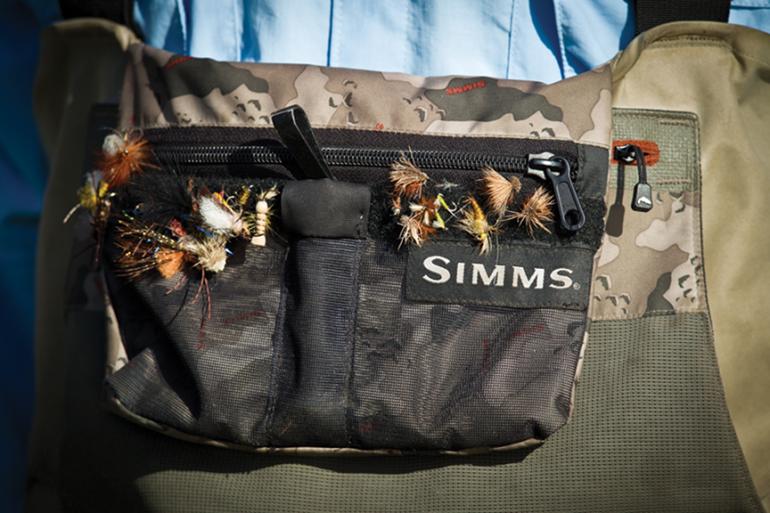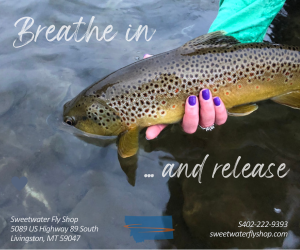Size Matters
Fly patterns that work in many sizes.
What fly should I use?—that’s the million-dollar question on every fisherman’s mind. Some people tie flies all winter in hopes of having the right fly for every circumstance. I used to be the same way, but over time, I started to eliminate the flies I didn’t use and the ones that didn’t work. Ultimately, I wound up keeping very few patterns, and using them in a broad range of sizes. This process allows me to focus more on fishing and less on choosing flies.
Take the stimulator, for example—this pattern can imitate stoneflies, caddis, and most grasshoppers. It can be tied in a range of sizes and colors, and with or without legs depending on the season and insects on the river.
Let’s apply this principle to the Big Hole. In early May, the stonefly commonly called a skwala is present and a #8 dark olive stimulator with rubber legs is perfect. In late May, the caddis hatch is on and a #14-16 tan and brown stimulator is perfect. In mid-June, the giant orange-bodied stonefly called a salmon fly is emerging and a #2-6 stimulator with an orange body and rubber legs is a great choice. Shortly after the salmon fly hatch is the golden stonefly hatch. That calls for a #6-8 stimulator with a pale yellow body and rubber legs. Then along come the yellow sallies, a #14-16 yellow-bodied stonefly that is perfectly matched by a stimulator in that size and color with a little red butt. Through most of the month of July, the isoperlid stoneflies are around and a #12-16 lite olive stimulator with fine rubber legs is the ticket. In the latter half of July and well into the fall, grasshoppers are around and a stimulator in a #6-10 with a pale yellow-to-green body is a killer pattern anytime the wind blows. Tied short and fat in a #12 with peacock hurl, the stimulator is a wonderful imitation for a flying ant or common house fly. Change the peacock for a cinnamon dubbing in a #12-16 and you’ve got a good pattern for searching any fishy riffle.
Another example of flies that can be tied in a range of sizes and colors is the parachute Adams. Mayflies make up a large portion of the available aquatic insects on most Montana rivers throughout the normal angling season. For the parachute Adams, the size can range from the giant green drake in a pale green #8-10 to the tiny #24 black body, white wing trico, and everything in between for the large range of mayflies common to our waters. The blue wing olive in a #18-20, the PMD in a #14-18 tied with a pale yellow body and grey wing, or a fine brown body and speckled wing in a #14-16 is a great fly for the march brown, a common early-season mayfly.
Caddis flies, one of a trout’s favorite foods, are present from early in the season until November. This fly should be ready to use in sizes #8-10 for early and late season, and on a #12-18 for the bulk of the season when most fly fishers are prowling rivers under the Big Sky. Colors can range from olive to brown, with and without hackle. I like my elk hair caddis tied with an antron shuck for a tail to imitate the pupal skin hanging from the struggling adult fly. Easy to see and great floating quality make this fly a terrific option anytime.
Want to catch more fish with less hassle? When in doubt, keep it simple.
David Decker owns The Complete Fly Fisher lodge in Wise River












